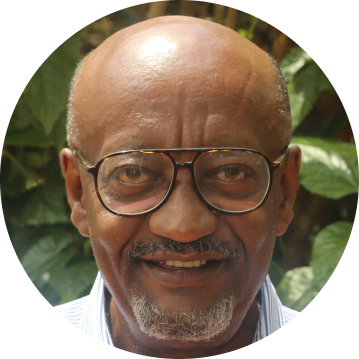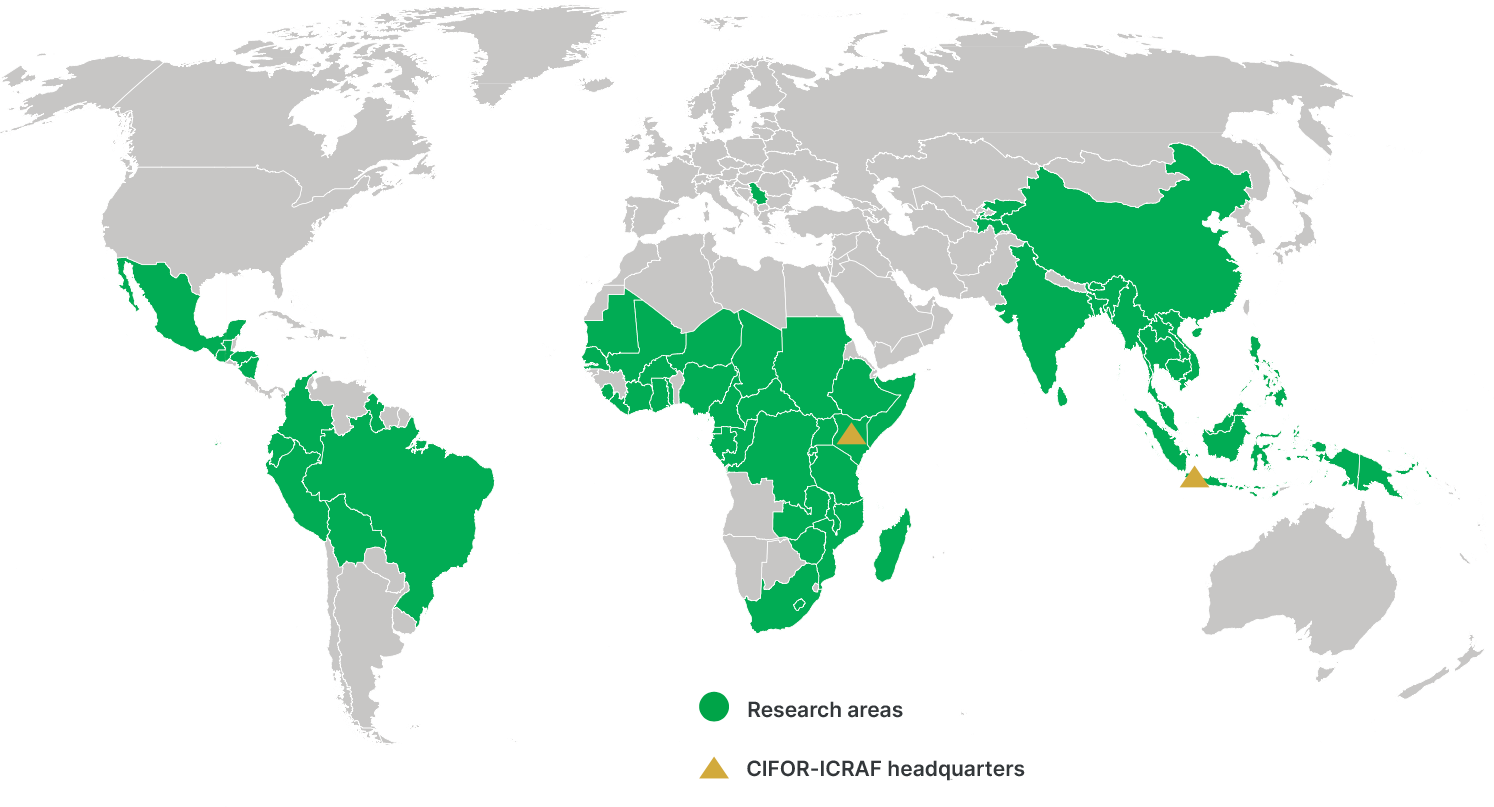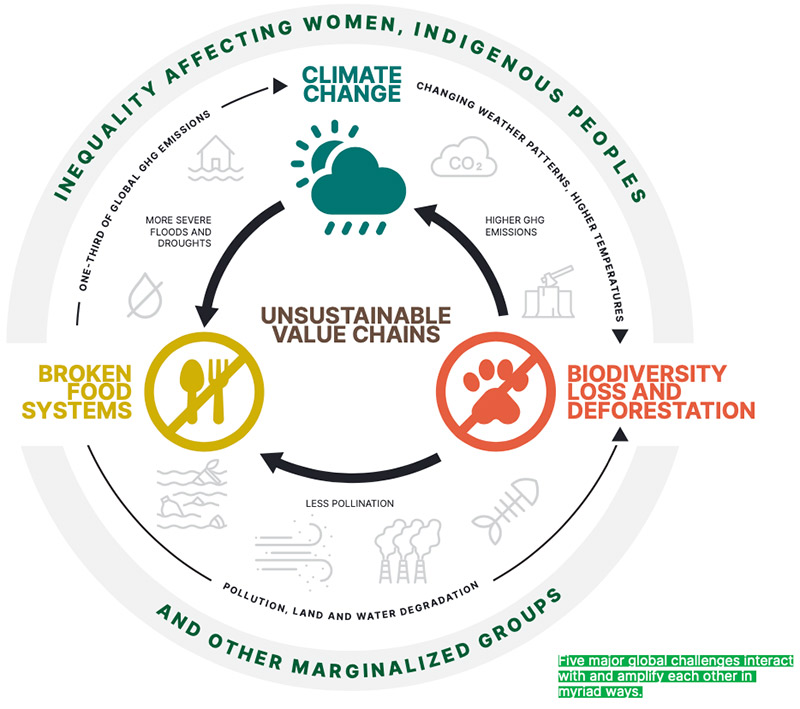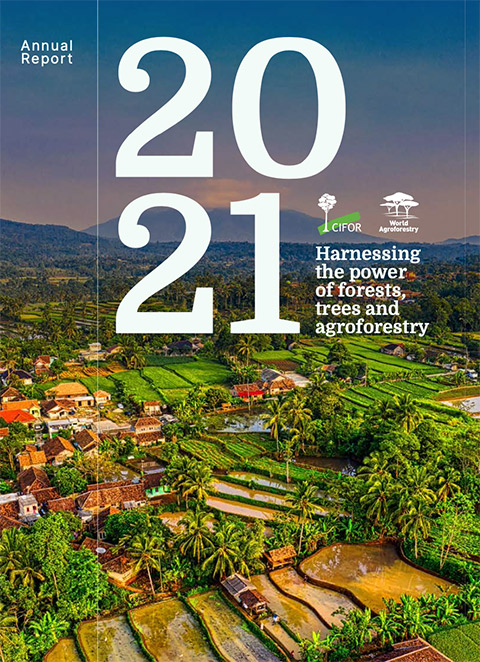
Getachew Engida
Board Chair

Tony Simons
Ex‐officio Trustee ICRAF, ICRAF Director General

Robert Nasi
Ex‐officio Trustee CIFOR, CIFOR Director General
Several turning points offered new hope in 2021: the slowing of the Covid-19 pandemic through widespread (albeit unevenly distributed) vaccination, the launch of the UN Decade on Ecosystem Restoration, and the historic Glasgow Leaders’ Declaration on Forests and Land Use.
CIFOR-ICRAF also marked two critical turning points: the successful completion of our three-year merger process and of the 10-year CGIAR Research Program on Forests, Trees and Agroforestry (FTA). Led by CIFOR-ICRAF in collaboration with partners, FTA’s contributions have resulted in millions of hectares of forests under restoration and better protection – and millions of people with improved food security and nutrition and the means to exit poverty.
Now fully merged, CIFOR-ICRAF is generating more evidence of the transformative potential of trees and forests, with our research consolidated into five integrated themes (trees, climate, soils, markets and governance). Our three holistic approaches – Transformative Partnership Platforms, Engagement Landscapes, and Flagship Products – are leveraging resources and partnerships across Africa, Asia and Latin America. We finished the year with a project pipeline of USD 430 million and harmonized internal management. We are making strong progress towards our Gender, Diversity and Inclusion goals and we now have a dynamic new website (cifor-icraf.org). We have also launched a recruitment process for a Chief Executive Officer to take CIFOR-ICRAF to the next level.
This report shines a light on some of our solutions to five global challenges: deforestation and biodiversity loss, climate change, dysfunctional food systems, unsustainable supply and value chains, and inequality. Achievements include informing national policies in Peru and Viet Nam, applying new technologies in the Congo Basin and India, and co-creating solutions with partners and communities in Indonesia and Cameroon, all while integrating considerations of the rights of women, Indigenous Peoples and vulnerable rural communities.
Exciting new projects launched in 2021 include Trees Outside Forests in India (TOFI) supported by USAID and the Agroforestry and Restoration Accelerator in Brazil in partnership with The Nature Conservancy and Amazon Inc.
1.5 billion people have been connected through the Global Landscapes Forum, which continued to break new ground – most notably at the UN climate conference in Glasgow, which had over 1 million session views from 140 countries. And Resilient Landscapes is fast becoming a nexus between science and business, finance, government and civil society, with new projects starting in Papua New Guinea, Serbia and Brazil.
As Chair of the Board Claire O Connor passes the baton to welcome Professor Getachew Engida, CIFOR-ICRAF now stands as one organization forged through shared values. Thanks to the generous support of our funding and strategic partners and the tireless efforts of our over 700 staff, we are well on our way to implementing our theory of change and realizing our vision of a more equitable world where forest and agroforestry landscapes enhance the environment and well-being for all.
Board of trustees
-
Getachew Engida
Board Chair
-
Doris Capistrano
Vice Chair
-
Alexander Müller
-
Bushra Naz Malik
-
Kathleen Merrigan
-
Marja-Liisa Tapio-Biström
-
Kaoru Kitajima
-
Vijai Sharma
-
Government of Kenya Representative
-
Government of Indonesia Representative
-
Tony Simons
-
Robert Nasi



